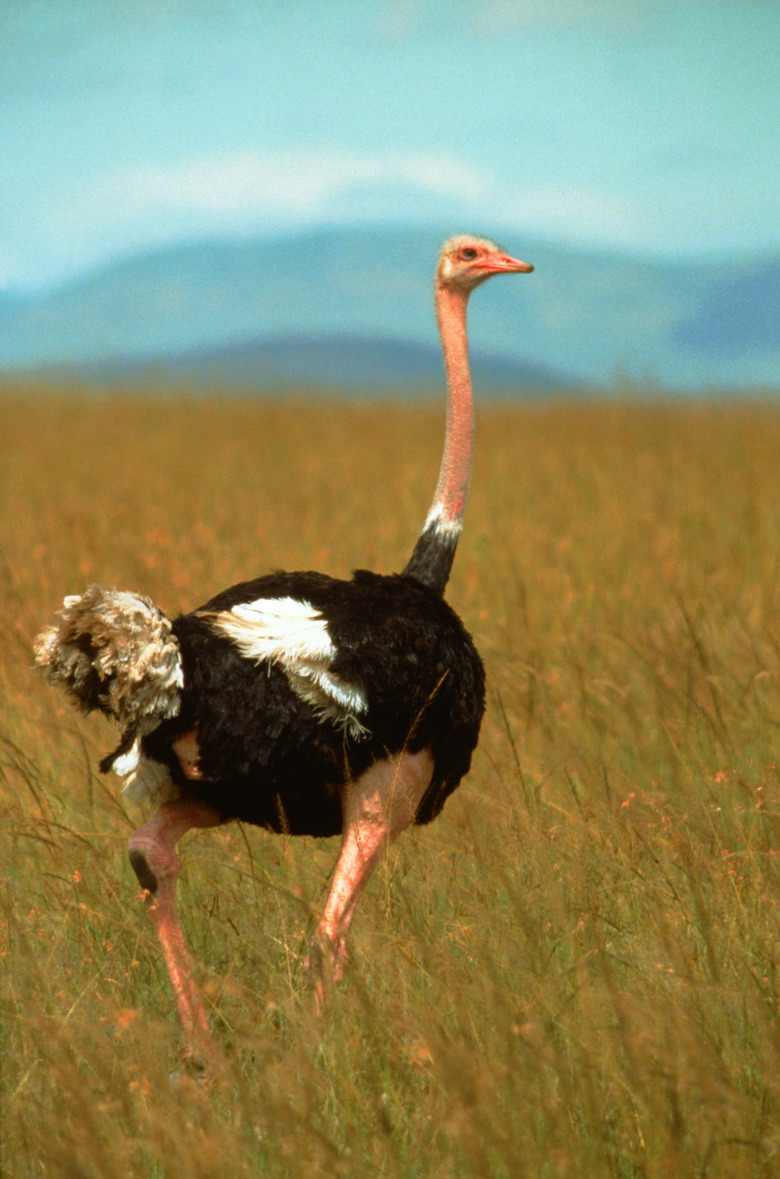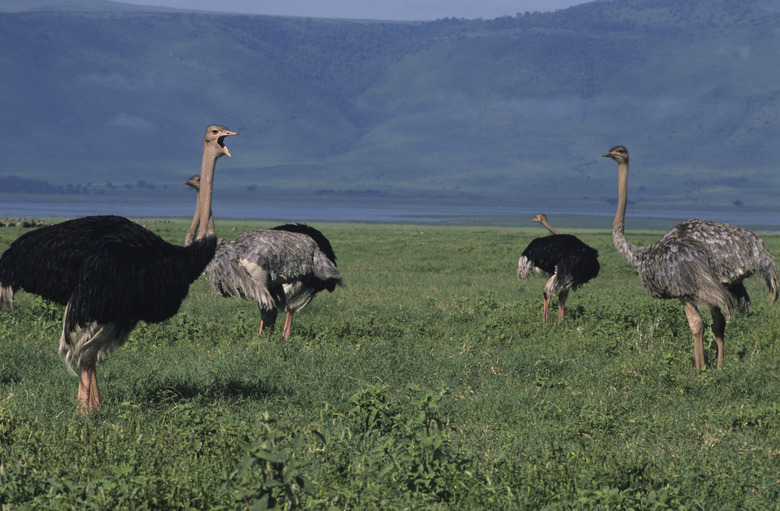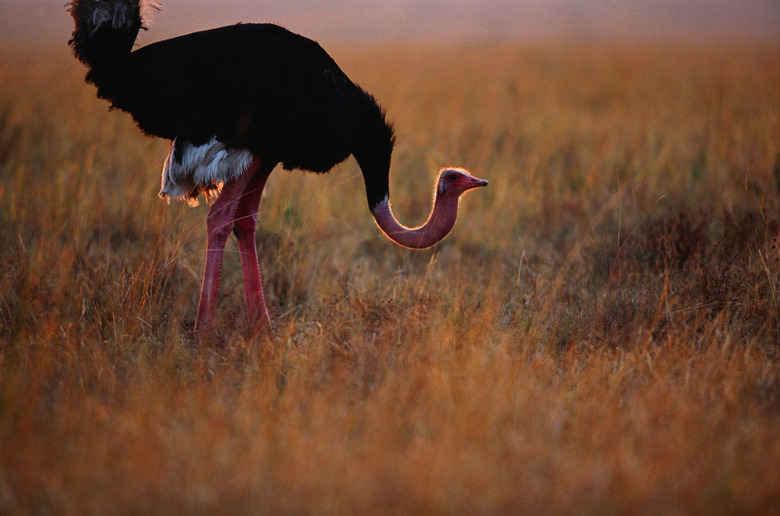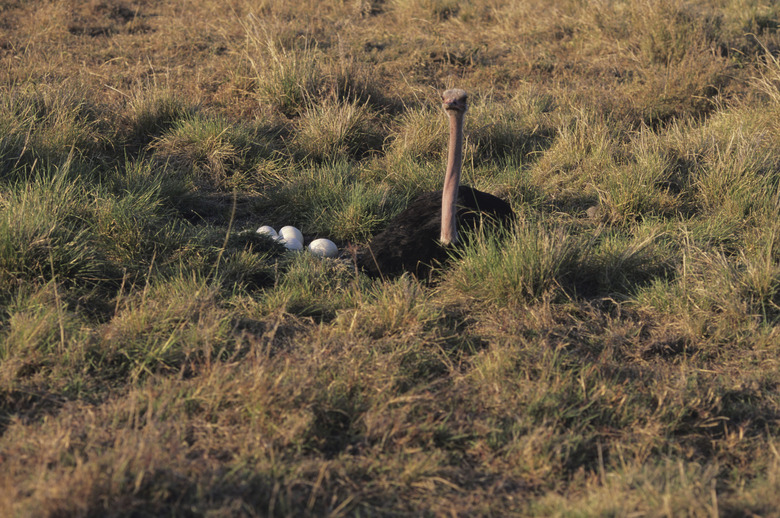Ostrich's Natural Habitat
The tallest and heaviest of the birds on earth, the ostrich cannot fly and depends on its many adaptations to survive. Found only in Africa, the ostrich can weigh as much as 287 lbs., states the San Diego Zoo website, and stands as tall as 8 or 9 feet. The ostrich offsets its flightless nature with keen vision and an ability to run as fast as 43 miles an hour to escape the danger that presents itself in its habitat.
Geography
Geography
The four separate subspecies of ostrich exist in Africa south of the Sahara Desert. The North African ostrich resides through a stretch of northern Africa from the western coast to parts of the east. The Somali and Masai ostrich subspecies inhabit eastern Africa, with the Somali ostrich living further north than the Masai, in the Horn of Africa region. The South African ostrich lives in the southwestern corner of the continent.
Habitat
Habitat
The grassy woodlands, savannas and semi-arid plains of Africa are the scenarios that support the ostrich. The animal's inability to fly would not allow it to survive in a heavily forested tropical ecosystem, as it would not have the room to run freely when danger threatened and would not be able to spot a problem from far away in such cover. The ostrich's strong legs enable it to outrun many predators, which it can spot in the open habitat.
Grazers
Grazers
The ostrich is a nomad and must follow its food sources, going wherever it can find sufficient berries, grasses, seeds and insects upon which to subsist. Ostriches also need a reliable source of drinking water, despite the fact that they get some moisture from the plants they consume. Ostriches therefore will inhabit many of the same habitats as grazers such as elephants and antelope, with these species often depending on the acute senses of the ostrich to alert them to any danger.
Function
Function
Ostriches have thick eyelashes that prevent blowing sand and dirt from harming their eyes as they endure sandstorms and windy conditions in their dry settings. The bird has short wings, but these are only to give it balance as it runs and for courtship displays. The ostrich has just two toes, which make it faster and an ostrich has a long neck, which serves to help it scan the surrounding countryside for lions, leopards and other potential predators. Ostriches live in groups, with the birds knowing that there is safety in numbers, with more eyes to watch for trouble.
Misconceptions
Misconceptions
The stories that an ostrich buries it head in the sand when danger comes are quite false. An ostrich, if it cannot run from trouble, can kill with one kick from its leg. However, the myth probably sprang up from observing ostriches that knew they could not run fast enough to escape a particular threat and lay down low to avoid detection. At such times, the bird's head and neck are difficult to spot against the sandy soil, leading people to think the bird was putting its head in the ground and hoping for the best.
Cite This Article
MLA
Lindell, John. "Ostrich's Natural Habitat" sciencing.com, https://www.sciencing.com/ostrichs-natural-habitat-6391764/. 24 April 2017.
APA
Lindell, John. (2017, April 24). Ostrich's Natural Habitat. sciencing.com. Retrieved from https://www.sciencing.com/ostrichs-natural-habitat-6391764/
Chicago
Lindell, John. Ostrich's Natural Habitat last modified March 24, 2022. https://www.sciencing.com/ostrichs-natural-habitat-6391764/





